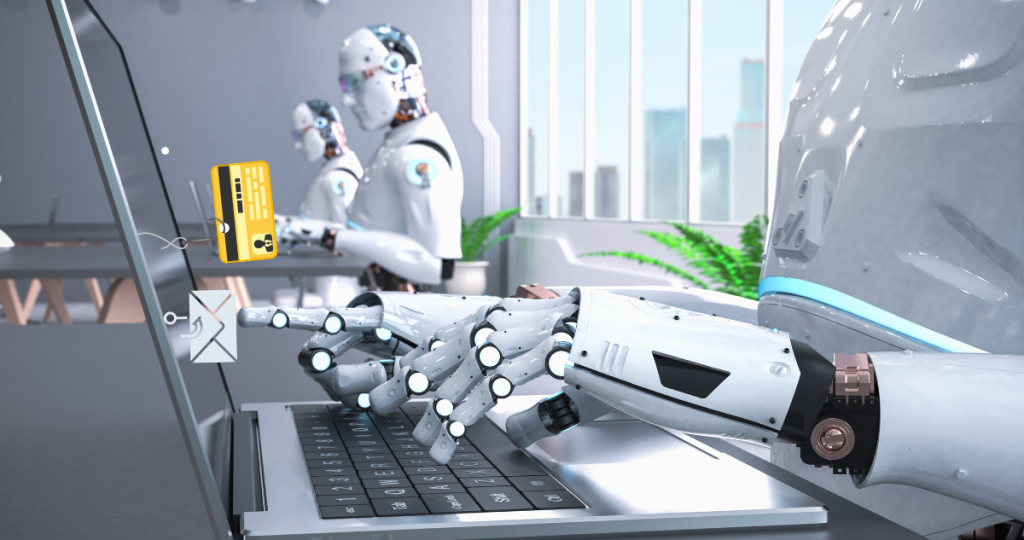Autonomous Artificial Intelligence (AI), one of which is Chat GPT, is a major milestone in the evolution of AI. Autonomous AI systems can perform tasks, adapt to new situations, make decisions, etc. While AI has elicited hopes of massive transformation in the technology industry, there exists a deep anxiety surrounding potential ramifications, with some calling for a pause in its development.
AI is also revolutionising cybersecurity. Research indicates that the global market for AI-based cybersecurity products was about $15 million and is expected to surge to roughly $135 million by 2030.
Benefits and dangers of Artificial Intelligence
The benefits of integrating cybersecurity and AI are numerous. Artificial Intelligence can make threat detection more effective and accurate; it can provide continuous monitoring and automate incident response process. It also has the ability to make inferences, recognise patterns and perform proactive actions on the user’s behalf.
But like many developments in technology, there exists a dark side to the development of Artificial Intelligence.
Social engineering scheme: Less experienced hackers can deploy AI to create highly convincing and difficult-to-detect phishing emails to become more effective with their attacks. Generally, phishing emails can be detected by grammatical and typographical errors, but without these signs, it may become difficult to identify them.
During the Black Hat Defcon security conference in Las Vegas, a group of researchers conducted an experiment. Two phishing emails were sent to 200 colleagues, one manually composed and the other generated by AI. The AI-generated phishing email experienced a higher click-through rate.
Password hacking: Cybercriminals may exploit AI to improve the algorithms used for deciphering passwords. The enhanced algorithms provide quicker and more accurate password guessing, promoting efficiency.
Deepfakes: AI’s remarkable capability to manipulate audio and visual content can be exploited by cybercriminals to create convincing illusions. They can fabricate videos and audios that mimic someone else, allowing them to impersonate individuals with alarming accuracy. These manipulated broadcasts are then circulated online, intentionally inducing anxiety, dread, or bewilderment among unsuspecting viewers. They may also use deepfakes in conjunction with social engineering, extortion and other schemes.
Consider this: Imagine an employee finding themselves in a perplexing situation: they receive an email purportedly from their manager, only to receive a phone call from the same manager moments later, reiterating the demands outlined in the email. The voice on the call sounds so familiar, leaving the employee no choice but to comply with the request. The advancement in fake voice technology and AI-crafted emails has reached such heights that it has become increasingly challenging to distinguish between genuine communication and manipulative tactics employed by cybercriminals. Hackers are now capitalising on Artificial Intelligence to lend an air of authenticity to their attacks.
Keeping Your Business Safe In Changing AI Environment
While it is crucial to recognise the potential of AI to improve cybersecurity, it is equally-if not more-important to be vigilant against the weaponised use of Artificial Intelligence.
Here are some strategies to help keep businesses safe:
Stay Informed
Stay updated on the latest advancements, risks, and trends in AI technology and its potential applications in cybercrime. This knowledge will empower you to make informed decisions and develop appropriate security measures.
Robust cybersecurity practices
Implement strong cybersecurity practices, including regular security audits, penetration testing, and vulnerability assessments. Keep software and systems up to date with the latest security patches and employ firewalls, antivirus software, and intrusion detection systems.
Employee education
Educate employees about AI-related risks, such as phishing attacks, deepfakes, and social engineering techniques. Train them to identify suspicious emails, messages, and calls, and encourage a culture of scepticism when it comes to unfamiliar or unexpected requests.
Multi-factor authentication (MFA)
Utilise MFA wherever possible to add an extra layer of security. By requiring multiple authentication factors, such as passwords, biometrics, or security tokens, it becomes significantly harder for attackers to gain unauthorised access.
Data privacy measures
Ensure compliance with data protection regulations, such as the General Data Protection Regulation (GDPR) or relevant local laws. Implement strong data encryption, access controls, and data anonymization techniques to safeguard sensitive information.
Incident response planning
Develop a comprehensive incident response plan that includes procedures for addressing AI-related threats. This should encompass swift identification, containment, eradication, and recovery steps to minimise potential damage and downtime.
Collaboration and partnerships
Foster collaborations with AI experts, cybersecurity professionals, and industry peers to share knowledge, insights, and best practices. Engage with security vendors who specialise in AI-driven threat detection and mitigation solutions.
Internal passwords and phrases
Enhance security measures by deploying internal phrases or passwords that are unfamiliar to potential hackers. While a one-minute voice recording can allow for a precise replication of an individual’s voice during a phone call, AI systems can only adhere to a basic script and lack the necessary sophistication to sustain the conversation and answer personal inquiries such as preferred spots of your children or the location of the most recent Christmas party.
By embracing a proactive approach to security, businesses can navigate the changing AI landscape while mitigating the risks associated with Artificial Intelligence
